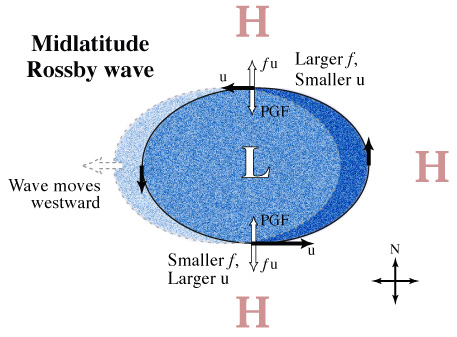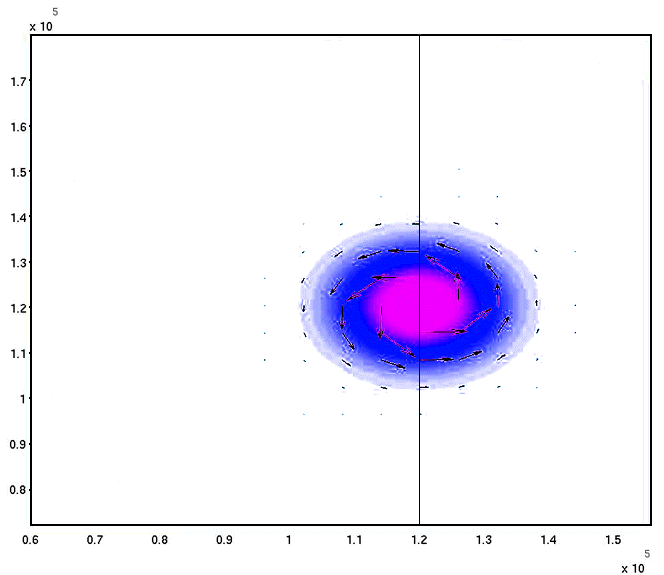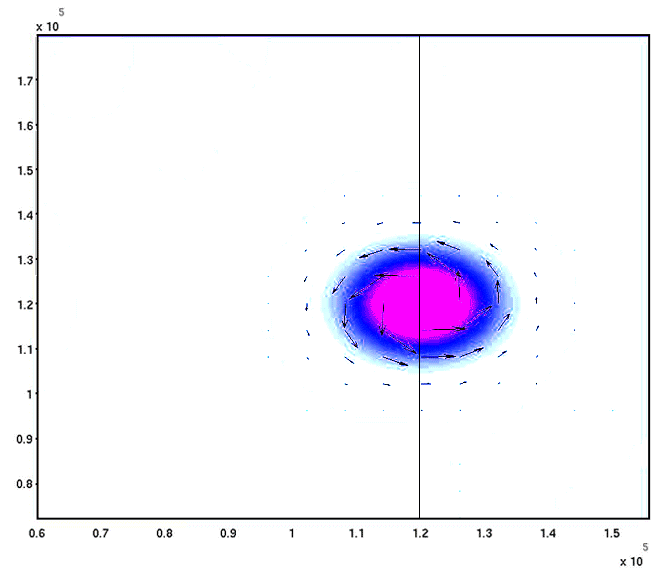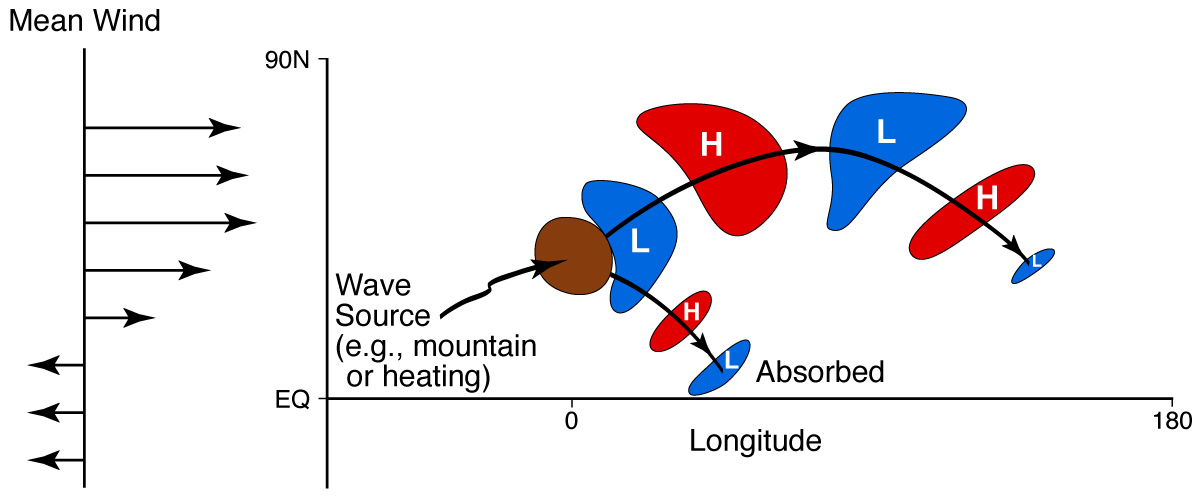Rossby wave westward propagation (mean wind is zero)

- If Coriolis param. f were const., a low pressure region could be stationary; winds circulating in balance with PGF
- b-effect: Increasing f northward (N. Hem.) implies imbalance in mass transport, yields progagation
- At “short”* wavelengths, energy of a wave packet can propagate eastward & have north/southward components due to transport of vorticity=spin of flow
*for deep waves in atm, “short”~1000s of km
Rossby wave westward propagation (mean wind is zero)

- Example of a Rossby wave packet in ocean upper layer (from the Regional Ocean Modeling System).
- Properties depend on wavelength so adjustment from the initial conditions leaves a longer wavelength packet propagating slowly westward.
- Short wavelengths or mean flow yield more complex propagation.
Rossby wave propagation - short wavelengths (mean current zero)

- Another Rossby wave packet in ocean upper layer but at smaller scale (100 vs 1000 km).
- [Properties depend on wavelength so adjustment from the initial conditions gives wave packets whose energy propagates north and south as well as eastward.
- Individual highs and lows still propagate westward.
Rossby wave pattern excited by stationary source

- Convective heating or flow over mountain can maintain wave packets against dissipation (friction etc.).
- Stationary Rossby wave remains after adjustment—has balance of westward propagation tendency vs. winds carrying it eastward
- Bottom line: Rossby waves create long-distance connections in the climate system with complex flow patterns!
